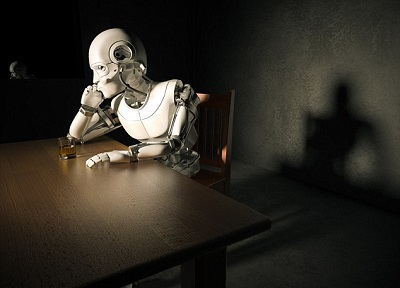The robot will now suggest ways of finishing off sentences and paragraphs.
With help from the audience at the event, Sloan made his bot generate the beginning of a dystopian sci-fi novel.
‘A long, long time from now there was a robot designed to destroy all the high families. The high families were the ones of course who owned the seasons. When they said so it was summer. When they decreed — winter fell.
Robots that use neural networks, which imitate parts of the human brain and are capable of ‘deep-learning’, will likely lead to AI that can imitate our writing styles, he said.
Using text written by humans, these robots can piece together how certain types of writing sound.
‘It turns out you can train a neural network on a big body of text,’ Mr Sloan added.
‘It can be Wikipedia; it can be all the works of Charles Dickens; it could be all of the Internet.’
They can use grammar and put words together in interesting and convincing ways — and I think unexpected and beautiful ways,’ Mr Sloan said.
While the AI’s writing isn’t yet up to the standards of H.G. Wells, future models could work as a useful gadget for writing inspiration, Mr Sloan suggests.
‘I am 100 per cent sure, in some number of years, that text editors will have some version of this,’ Sloan said.
For example, one of these intelligent programmes could digest an entire archive of corporate email.
It could even help bounce ideas with screenplay writers drafting their next big blockbuster, he said.
Robots are increasingly delving into the creative arts, with varied success.
Earlier this year, a computer programme designed and painted a new Rembrandt in the style of the famed Dutch artist.
In May, Microsoft had to terminate a Twitter bot named Tay that used the internet to learn its conversation style.
N.H.Kh

